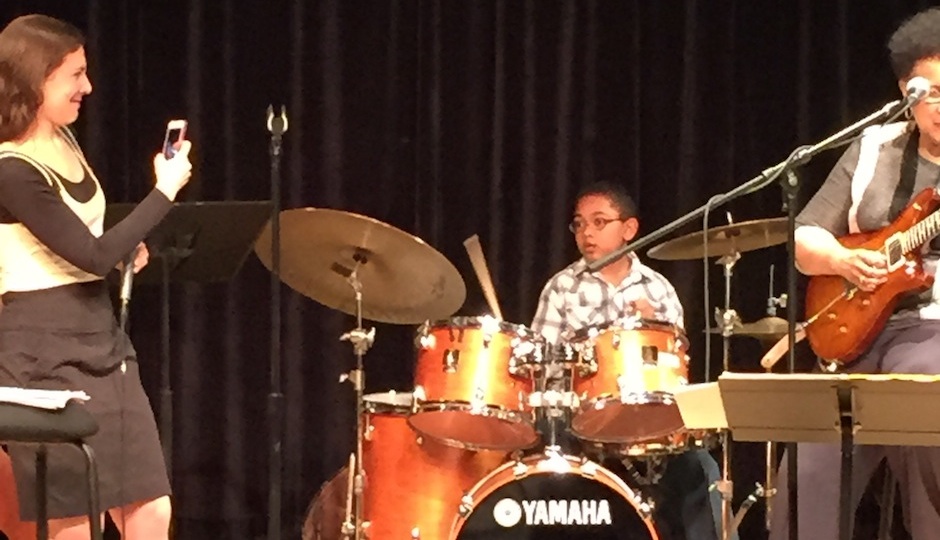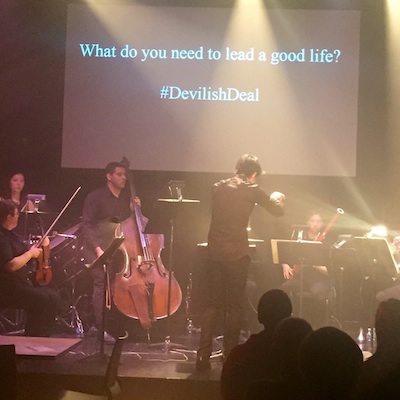Kimmel’s SEI Innovation Studio Showcases Exciting Future of Performing Arts in Philly

Jazz singer Venissa Santi taking a photo of the 8 year-old drummer during her Wednesday night set at the Kimmel’s SEI Studio.
It was a nasty few days of weather in the Philadelphia region, but the energy inside SEI Innovation Studio, the small, intimate black-box type theater in the basement of the Kimmel Center, was hot as hell. For two nights in a row, the performing arts organization presented a series of seemingly unrelated events—a jazz residency program by soulful singer Venissa Santi and a technology-driven rendition of Stravinsky’s A Soldier’s Tale lead by the Curtis 20/21 Ensemble—that were utterly affordable (the first was free, the second was only $10 and that included a cocktail) and beyond exciting for anyone who sees Philly as the future for the performing arts.
Sure, three stories above, the remarkable Philadelphia Orchestra was performing a concert, and Opera Philadelphia was in full-fledge production mode with Ariadne auf Naxos, but there was something uniquely community driven about the programming in the “basement,” so to speak, that outshone the mainstage happenings.
The Wednesday evening jam session with Santi, arguably already an established jazz artist, felt particularly soulful and engaging. The free performance, part of a larger cumulative work that Santi is working toward (a jazz musical featuring three female performers and possibly a child), was infused with local performers, including a show-stealing 8-year-old drummer. Santi also took the time to interview members of her own band, asking them when they had “epiphanies” that music was going to be their lives. Toward the end of the set, she turned the stage over to a community-based youth jazz group for a number.

Guests at the Curtis 20/21 performance were prompted to live Tweet at certain points of the evening via a giant screen.
Last evening, the Curtis 20/21 Ensemble broke all sorts of genre barriers by presenting a modern take on Stravinsky’s The Solder’s Tale, performed with Philadelphia poetry slam celebrity Jacob Winterstein. The studio was transformed into a club-like setting with a giant LED screen behind the performers that broadcast live Tweets, Instagram posts, and Facebook statuses about the performance from audience members. The audience, filled with both young Curtis students, plus those who looked like more of the “traditional” orchestra type, seemed to be fascinated by the fusion of technology and performance.
You can call these programs a “best-kept secret,” so to speak, but they are more than that: These are clearly ways to get new audiences into not only the Kimmel but into the arts, period. It is also a clear way to demonstrate how an organization like the Kimmel can be an incubator for Philadelphia artistic talent. They have the means, the space, the people, and the funding to support these types of programs and artists in a meaningful fashion.
In essence, it is truly a win-win-win: The artists get a chance to perform works at a world-class facility, the Kimmel gets people in the door, and the community gets a chance to see amazing works at barely any cost to them. One can only have a positive outlook on what type of programming the Center will present along these lines in the future.


